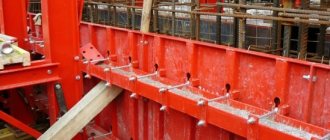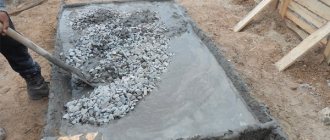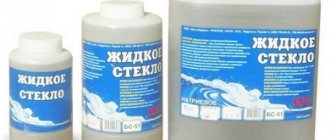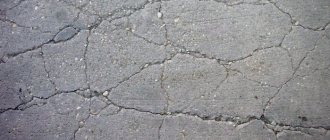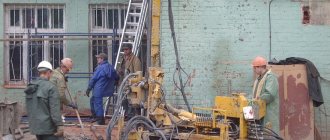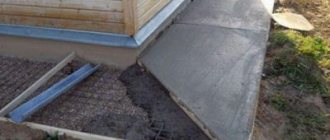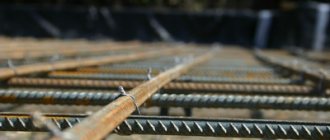To fill the base of a building structure, cement-based solutions are used, but these are not always CPS (cement-sand mixtures). Often, in order to obtain a powerful monolithic strip or platform, concrete from ASG (sand and gravel mixture) is used with the addition of M400 cement as the main binding and fastening component. Based on the composition of the working mixture (sand, cement, gravel or crushed stone), it is easier, more convenient and more economical to prepare such a solution directly on the construction site due to the large weight of the granular fractions and the difficulty of mixing the mixture during transportation of the solution from the manufacturer to the construction site. Another advantage of localizing the process of making the mortar on site is that the proportions of concrete from ASG and cement will be maintained in the required ratio, and the thickness of the working mortar will be appropriate.
Table 1. Compositions of branded concrete
What is PGS?
The abbreviation ASG stands for sand and gravel mixture, mined in quarries, from the bottom of seas and rivers. The main properties of ASG are regulated by the requirements of GOST 23735-2014 (“SAND-GRAVEL MIXTURES FOR CONSTRUCTION WORK”). Construction companies use ASG for: road construction, arrangement of foundation cushions, backfilling of trenches, backfilling of foundations for various sites, land reclamation, landscaping of adjacent territories and other auxiliary work.
As a concrete filler, ASG is used exclusively in private housing construction, and only in cases where structures and structures do not experience high mechanical loads. PGS is not suitable for concrete produced in accordance with GOST requirements, and is not used by factories producing ready-mixed concrete of certain grades.
The reason for this lies in the composition and origin of the material in question. PGS are fragments of rocks of different fractions, different hardness, mixed with sand, consisting of particles of various sizes. Also, the extracted ASG contains admixtures of clay, dust, silt and soil. Moreover, each specific batch of material mined in a specific quarry has an individual percentage composition, size and hardness of particles, which are difficult to identify by percentage, size and hardness.
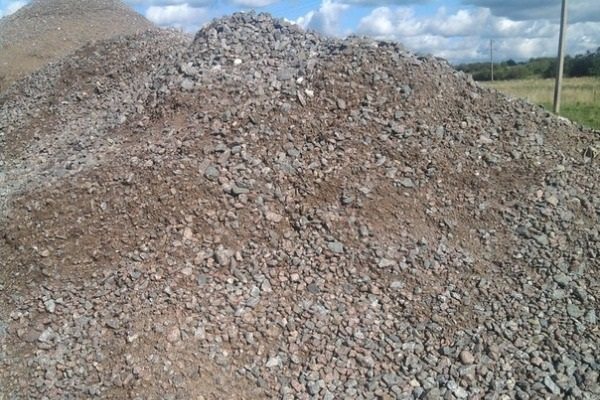
At the same time, after enrichment, sand and gravel material is a good, relatively inexpensive complex filler for heavy concrete, from which you can build foundations and walls of unloaded low-rise buildings, equip blind areas, garden paths, platforms and other similar structures.
In accordance with GOST 23735-2014, depending on the percentage of the main filler (gravel), 5 groups of enriched ASG are distinguished:
- First group: from 15 to 25% gravel.
- Second group: from 25 to 35% gravel.
- Third group: from 35 to 50% gravel.
- Quarter group 50 to 65% gravel.
- Fifth group from 65 to 75% gravel.
Practice shows that the most optimal composition of concrete from PGS is obtained when using material of the 5th group. Thus, when preparing concrete from group 5 ASG, it is possible to produce a building material that corresponds to the most popular “GOST” grades of heavy concrete - M150 and M200. At the same time, it is impossible to prepare concrete material of grades higher than M200, even from enriched ASG.
Compaction degree
Transportation of a bulk substance leads to its compaction. Compression is controlled by regulatory building standards. The exponential value that determines the amount of reduced volume is called the compaction coefficient. Compaction standards are set at the state level.
Compacting the material is a natural process; the coefficient depends on the mass of the batch. Important points are the quality of the material and the method of transportation. The average compaction index is 1.2, according to the standards. For example, for sand the compaction index is 1.15, for crushed stone - 1.1.
The compression ratio is an important point in construction. At the beginning of the work, a preparatory stage is carried out, during which the thickness, level, quantity and other indicators necessary for subsequent work are determined. The acceptance of the final result is influenced by the compaction factor.
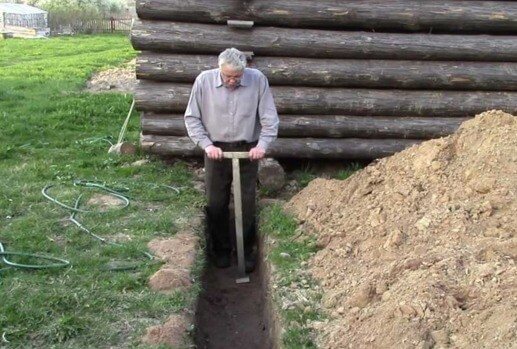
Tamping sand and gravel mixture.
When compacting soil using the tamping method, the main rules are followed. Differences in the depth of the dug trench are leveled out by compaction from the highest elevations, gradually moving to lower ones. Compaction is carried out until the density required by the standards is achieved. When working with the mixture, freezing of materials is not allowed; humidity is normal. The process is considered complete when the number of strikes does not exceed the established limits. The so-called “two control strikes” rule.
Return to contents
ASG concrete for foundation
The foundation of a building is the most loaded structure that can be filled with concrete based on enriched ASG. In this regard, we will consider the intricacies of preparing concrete from PGS for the foundation of a low-rise building.
As already mentioned, there are no official data regulating how much PGS is needed per 1 cubic meter of concrete for pouring a foundation. Therefore, private developers who have chosen this product as a filler should be guided by the empirical proportions of concrete made from ASG:
- 1 part of cement TsEM I 32.5N PTs (old designation M400) or TsEM I 42.5N PTs (old designation M500).
- 8 parts of enriched ASG of the fifth group.
- Grinding agent (water) 0.5-1 parts from cement.
The amount of water may differ to a lesser extent depending on the humidity of the ASG. By mixing the components in the specified proportions, the final result is ready-made concrete that corresponds to the GOST grade of heavy concrete M150.
Special Recommendations
It is important to understand that the brand strength of concrete is achieved after 28 days (using the example of pouring a foundation). You don't have to wait a whole month to continue construction. If the weather is warm, then on the third day the concrete will reach 70% strength. This is a normal value, sufficient for further construction of walls. In cold seasons you will have to wait longer - about a week.
Mixing by hand is important for a small list of works: foundations, dachas, one-story houses. The volume of a concrete mixer is from 125 to 300 liters, and pouring the foundation for a house with a basement requires an average of 20 m3 of concrete.
Concrete from ASG: proportions in buckets
Measurement measure - “Bucket” is the most popular way to measure the number of components when mixing concrete with your own hands from ASG or other types of components. Moreover, if the weight of a “bucket” of cement and grout can be systematized and brought to a single denominator, then the weight of a “bucket” of ASG is best determined individually by weighing a specific mixture directly at the construction site.
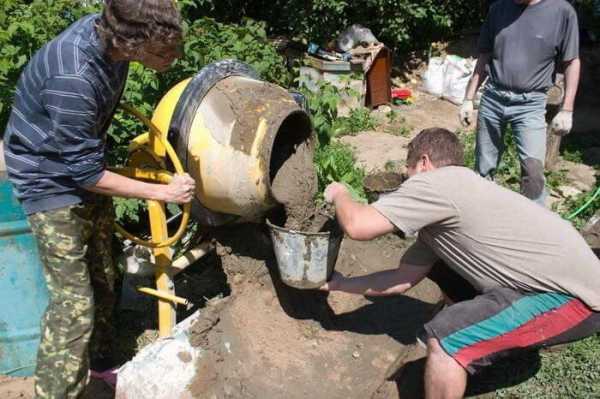
However, given the relevance of this publication, let us consider the question: how to make concrete from ASG using a standard 10-liter bucket and the average specific bulk density of a sand-gravel mixture.
- Determine the amount of cement. The specific density of Portland cement CEM I 32.5N PC generally accepted for calculations is 1,300 per 1 m3 of volume. Accordingly, the amount of cement in 1 ten-liter bucket: 1,300 x 0.01 = 13 kg.
- We determine the amount of ASG. According to the above proportions, we will need: 8x13 = 104 kg of ASG. The specific density of enriched ASG is 1,650 kg per 1 m3. Accordingly, 1 ten-liter bucket contains: 1650x0.01 = 16.5 kg of ASG. Determine the number of buckets: 104/16.5 = 6.3 buckets.
- The amount of water is 0.5 buckets.
Thus, for one bucket of cement you will need to add 6.3 buckets of enriched ASG and 0.5 buckets of water.
How to choose the proportions of components
The quality of the consumables required to prepare concrete from ASG (proportions in buckets or kilograms) determines the quality of the finished product. Therefore, it is recommended to purchase tested, certified and fresh building materials. The quality parameters of ASG and OPGS are initially determined by the method of extracting the mixture: whether it was lifted from the bottom of the river or extracted from the sea. In such mixtures there are practically no foreign impurities that impair the quality of the product. This factor has a positive effect on the adhesion of the gravel-sand mixture with other fillers in the solution.

Table 7. Ratios of M400 cement, sand and crushed stone when mixing concrete mortar
It is recognized that an enriched sand-gravel mixture is better than a classic one for the reason that the gravel mass fractions are larger than sand, and this changes the characteristics of the solution in favor of improving its quality.
Portland cement is a binding component that helps other bulk aggregates adhere to the work surface and to each other. The most popular brands of Portland cement for the construction of foundations in individual construction are M300, M400, M500 and M600.
Important: when using a concrete mixer to mix PGS, the strength of the finished mortar increases by 50%, and preparatory operations are more intensive and with better quality than when mixing manually.
The brand of Portland cement is selected based on the construction problem being solved. Thus, when building a low-rise building, it will be optimal to use the M300 and M400 grades of Portland cement. This consumable building material is suitable for any purpose related to the preparation of cement-sand mortars. The composition of the concrete mixture for pouring the foundation is given in Table 8.

Table 8. Composition of the concrete mixture for pouring the foundation
Portland cement M600 has much greater initial strength and is too expensive for individual construction, and in terms of setting characteristics it is significantly inferior, since it hardens faster than a team with hand tools can use it. The strength of the material largely depends on its freshness: dry cement after storage for ≥ 30 days reduces its strength by 10%. If Portland cement is stored for 3 or more months, then the strength decreases by 20%, with six months of storage - by 1/3, with storage for 12 or more months - by 40%, and if the cement has been in storage for more than 24 months, it will lose strength is 2 times.
How to prepare high-quality concrete based on ASG
To prepare concrete mortar directly on the construction site, you will need the following materials and tools.
- Electric concrete mixer or entrenching tool for manual mixing of the mixture.
- Portland cement of the selected brand.
- Clean drinking or industrial water (water with foreign impurities can significantly deteriorate the quality of concrete).
- Enriched sand and gravel mixture.
- Bucket or other container for working with the solution.
- A bathtub or similar reservoir (if there is no concrete mixer) in which the liquid solution will be prepared.
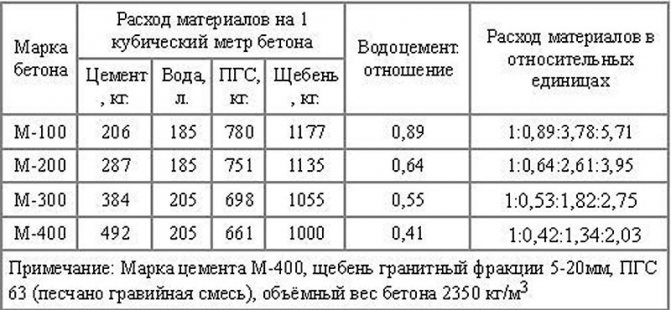
Table 9. SNIP of Portland cement consumption per cubic meter of concrete
For OPGS in cubic meters, the proportions of concrete are as follows: 8 parts of sand and 1 part of Portland cement - this ratio will ensure the strongest connections between the components (the proportions are presented in Table 10). Water must be added individually, and this depends on the moisture content of the bulk materials. Water is poured into the dry composition in small parts so as not to make the solution too liquid. Adding dry ingredients to a ready-made but too liquid composition will not improve its performance, so you need to be careful and attentive with water. When ordering gravel mass from the manufacturer, it is necessary to monitor the moisture content of the composition, which must be indicated in the accompanying documents and confirmed by the laboratory.
Important: in order for the foundation of a construction project to meet the design strength, it is necessary to use a sand-gravel mixture with a grain fraction ≤ 80 mm. With such sizes of gravel, the proportions of the concrete solution will be 6 parts of gravel mass in 1 share of Portland cement.
Even such a solution, seemingly simple at first glance, can be prepared quickly, efficiently and without loss of performance characteristics of strength and density by experienced construction professionals.
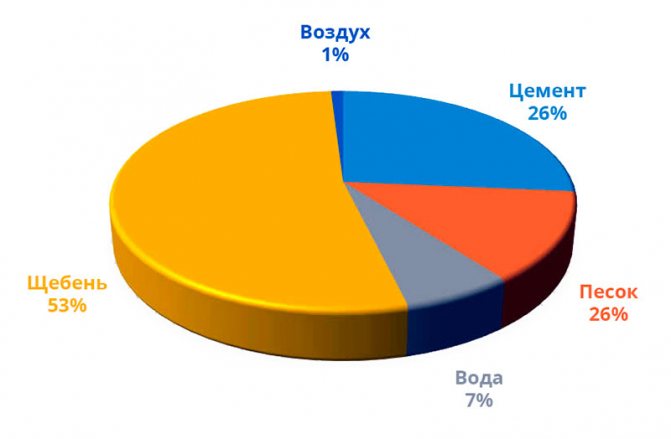
Table 10. Proportions of concrete mixtures
What else needs to be taken into account when mixing ASG concrete mixture? The ratios of dry litter measured in buckets will be very different. One twelve-liter bucket can contain:
- Portland cement - up to 15–16 kg,
- Dry mixture of gravel and sand - up to 18 kg.
In our case, the ratio of dry components for preparing classic concrete is 1:7. For OPGS it is necessary to take 1 share of Portland cement and 9 shares of dry sand-gravel mixture. Water is added using the method described above.
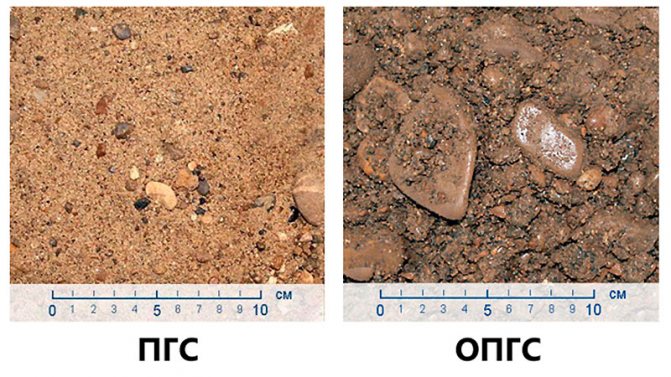
Table 11. Appearance: classic and enriched gravel mass
conclusions
Thus, the answer to the question of developers “Which working mixture is best to use for preparing concrete - ASG or OPGS?” will be as follows: OPGS is used only in the delivery state. Let's look at the use of the classic sand-gravel mixture in more detail.
Classic ASG is a building material with a small percentage of gravel and its fractions. In addition, PGS is a mixture that often contains large boulders and large rock fragments - ≥ 80 mm. But even experienced construction professionals often make the mistake of recommending using the usual classic sand-gravel mixture to prepare concrete yourself right on the construction site, keeping in mind that the fractions of coarse gravel aggregate cannot exceed 80 mm. That is, based on the facts stated above, it turns out that the builder, before backfilling the ASG to mix the solution, must enrich the gravel - remove fractions of unacceptable sizes.
Therefore, the correct answer will be this: it is allowed to pour unenriched gravel into the future solution, but you need to transform its qualitative state into an enriched product on your own.
How much ASG is needed for 1 cubic meter of concrete?
To determine how much ASG is in 1 m3 of concrete, we use the number of buckets and the number of kilograms calculated above - for 1 ten-liter bucket of cement, there are 6.3 buckets of ASG and 0.5 buckets of water. Let's proceed to the step-by-step calculation:
- We determine the “portion” of concrete components in liters per 1 bucket (10 liters) of cement: 10 (cement) + 63 (AGS) + 5 (water) = 78 liters.
- We determine how many “portions” fit in 1 m3 (1000 l): 1000/78 = 12.82.
- We determine the amount of ASG per 1 m3 of concrete in liters: 63x12+(63x0.82)=807.66 liters.
- Considering that 1,650 kg of the material in question is placed in 1 m3, we convert liters to kg: 1650x0.80766 = 1332.63 kg.
As a result of the calculations, the following results were obtained: the amount of ASG per cubic meter of concrete in buckets is 80.7 buckets, the amount of ASG per cubic meter of concrete in kilograms is 1332 kg.
